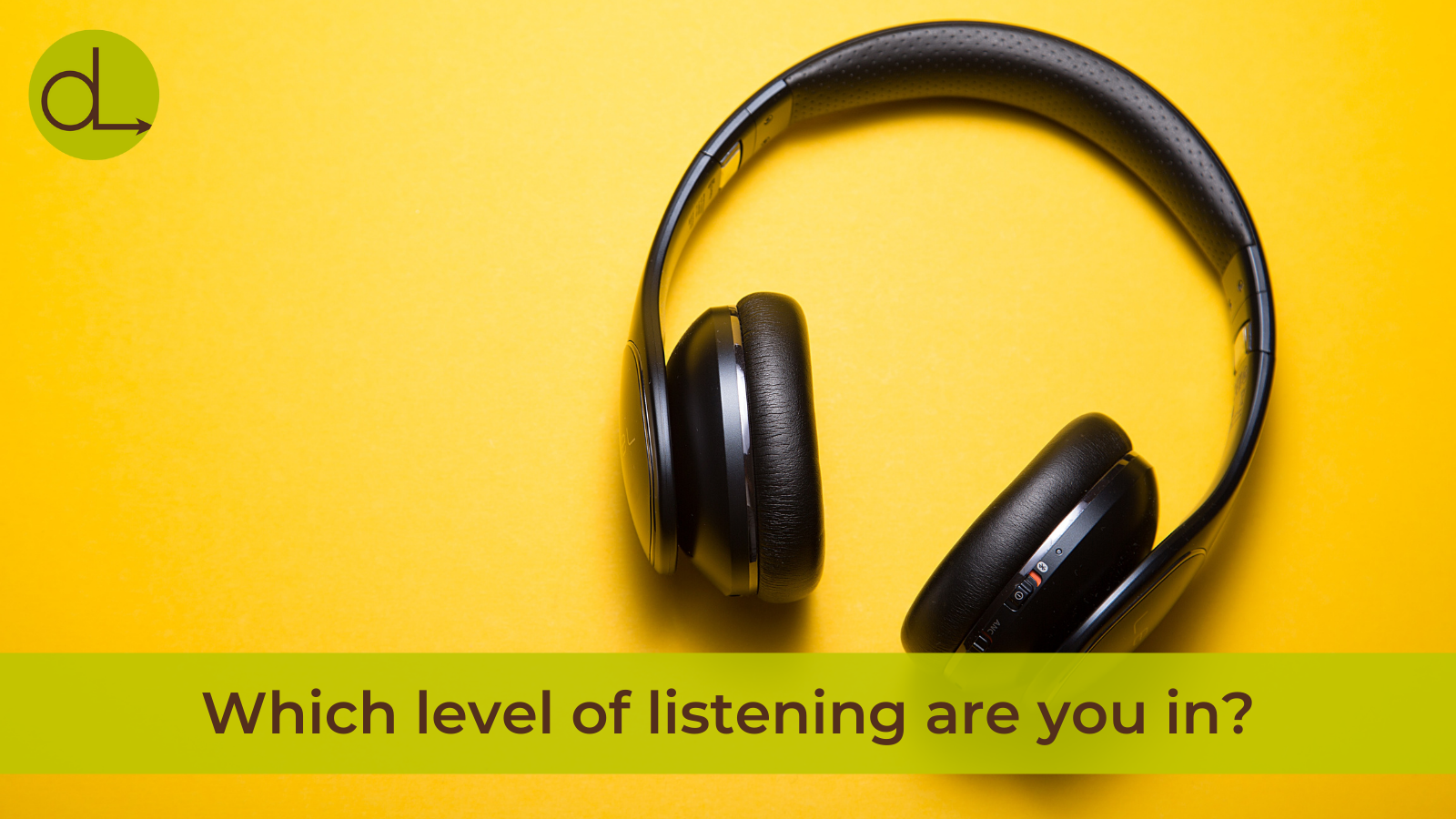According to a survey from Accenture, 96% of professionals report that they’re a good listener.
I don’t know about you, but that number seems high to me. Very, very high.
We all know the basics of good listening: eliminate distractions, maintain eye contact, give them your full attention, etc.
But just because we know how to be a good listener, doesn’t mean we actually do it.
Are you listening?
In workshops this past week, I heard a number of reasons (some might call them excuses) as to why people struggle to be a good listener. (All from people who know how to be a good listener.)
- “Someone starts asking me a question, and I know where they’re headed. So I stop listening because I’m getting my response ready.”
- “Zoom makes it easy to multitask. I can look like I’m listening and no one knows I’m working on email.”
- “I don’t have time to listen. Especially if I know what they should do. I just want to cut to the chase.”
We’ve all been there. We’re human. And as seemingly easy listening is, good listening is really difficult.
Three levels of listening
All types of listening are not equal. Consider the three levels of listening. I learned this concept in my coach training, but this extends beyond coaching conversations.
LEVEL 1: INTERNAL LISTENING. Focus on self.
- Listening to our own thoughts and judgements. The spotlight is on your feelings, concerns, and judgements. It might be thinking about what you’re going to say next, the email you should be writing, or what you want to have for lunch. Listening to their story might also make you think about your own personal experience. While they’re talking about their dog, you can’t wait to share about Fido.
LEVEL 2: FOCUSED LISTENING. Laser focus on other.
- Listening to the other person exclusively and intently, 100% focused on their words, tone and body language. You notice what they’re saying, but also what they’re not You see how they smile and what lights them up and what falls flat. During focused listening, you repeat back what you’re hearing so you can better understand and likely help them to process and understand what they’re saying as well.
LEVEL 3: GLOBAL LISTENING. Focus on the emotional field.
- This expands the focus to also paying attention to the energy in the room (and beyond!). This is where you access your intuition, receiving valuable information that is not directly observable. You are fully tuned in to the emotional field that’s being created. If you’re feeling the buzz of an excited conversation or can “cut the tension with a knife,” chances are you’re listening at Level 3.
One level of listening is not better or worse than the other. However, being aware of the three levels of listening allows you to assess at any given moment if you’re listening at the level you want to. Listening to a waiter share the special-of-the-day calls for listening at Level 1. But when talking to an employee, Levels 2 and 3 are going to provide greater value.
“Just” listening
Last week I shared with you the story of Mark who was able to change the dynamic of his conversations with his wife by “just” listening instead of telling her what she should do. He was so excited about the results that I asked where else he might be able to apply what he was learning.
Mark admitted he often jumps in to fix with his employees as well. “But that’s different, Darcy. People come to me with their problems expecting me to solve them. They want me to give them the answer. It’s not like I can just sit back, listen, and drink a beer at work.”
He was right. He was promoted to manager, in part, because he had problem-solving skills. Most managers see their fixing skills as incredibly valuable to their team.
But just for fun, I asked what it’d look like to lean back and just listen (minus the beer!) when his employees reach out to him. He had no idea, but decided to give it a try.
He reported back that at first he spent a lot of time biting his tongue and sometimes he wasn’t successful (Level 1). Eventually he leaned more into “just listening.” Similar to how he listened to his wife, he repeated back what he heard and validated the employee who was struggling or stuck (Level 2).
This is where he had a major insight.
“One of my employees was going on about how he was having a difficult time with a certain piece of coding. Typically I’d jump in and give him ideas to try. Instead, I simply said, ‘It’s a tricky task, and it sounds like you’re working really hard on it.’ My employee stared at me. I thought I said something wrong. (Mark was noticing something at Level 3 so he simply remained quiet.) My employee eventually said, ‘Yeah. It is tricky.’ And then he started sharing his thought process. I didn’t have to say a thing! He talked it through and came up with a solution.”
This was a stretch for Mark at first. It wasn’t easy to “just” listen. But by listening, he got better insight into his employees’ approach to problem solving. It also helped strengthen his relationships by recognizing the work of his employees and trusting them to think it through. And, more often than not, he said the employee’s solution was better than what he would’ve offered.
Could Mark fix problems by “just listening?” Absolutely.
One-Minute Core Workout
- Pause: When you’re listening and feeling distracted, Pause.
- Think: What level of listening am I in? Is this where I want to be?
- Act: Choose what level you want to be in.
No one is a good listener 100% of the time. But you always have the choice to listen or to find a different time when you can listen. Pay attention to the three levels of listening, let go of the excuses, and start to enjoy the results….with or without a beer.



